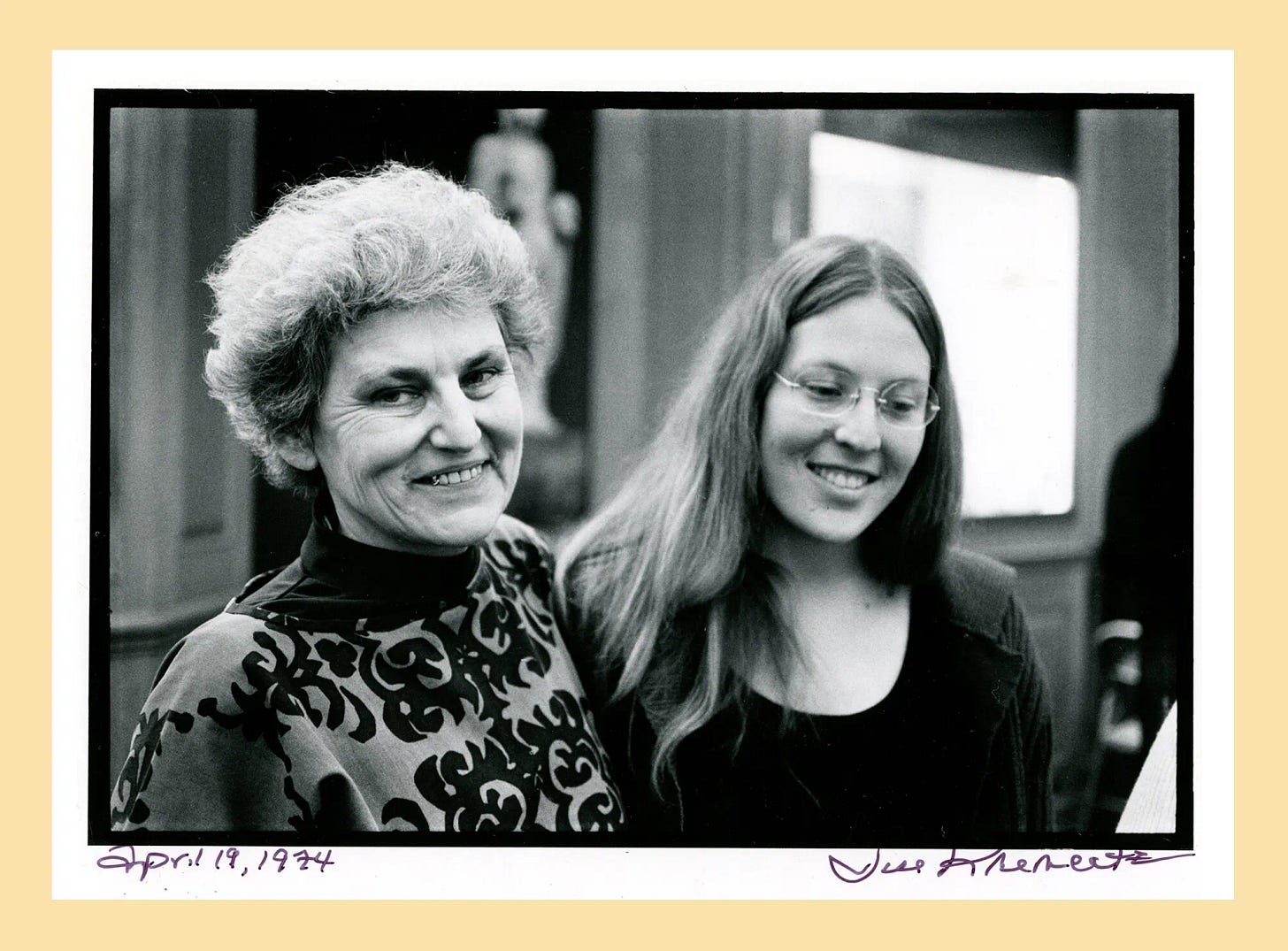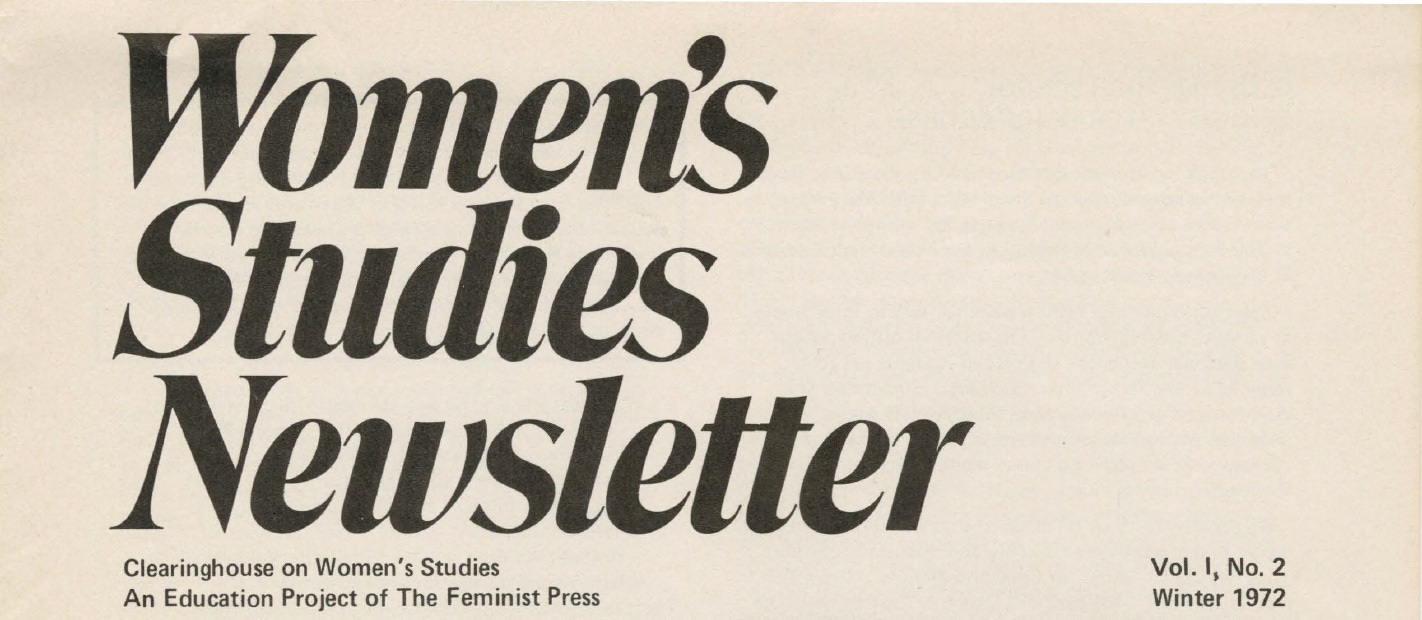From 1972 to 1974, over four issues of the Women's Studies Newsletter (published by The Feminist Press at the City University of New York), the feminist writer Tillie Olsen spooled out an epic journey through women’s lives in books. These four reading lists—growing off of each other, at times repeating—came from her own study of women writers and how women were discussed in books. A study that formed the basis of her 1978 nonfiction book Silences, “an examination of the impediments that writers face because of sex, race or social class,” and which informed her work as a professor where she sought to “democratize the literary canon to the works of Third World writers, working class writers, and women.”
From Rose Kamel’s “Literary Foremothers and Writers' Silences: Tillie Olsen's Autobiographical Fiction,” MELUS (Autumn, 1985) Vol. 12, No. 3:
Born in 1913 to East European Jews living in Nebraska, Olsen had no formal college education, but read voraciously. She became a longshoreman's wife raising four daughters in working-class San Francisco, taking low-paying jobs, becoming active in radical politics, and organizing unions. Only when the last of her children entered school could she concentrate on writing. A Ford grant apparently allotted Olsen the solitude she needed but "time granted does not necessarily coincide with time that can be most fully used.' Dishearteningly often, writer's paralysis diminished her productivity.
In 1954, when she was fifty, Olsen published the brilliant short story "I Stand Here Ironing," having served a prolonged apprenticeship during which "there was a conscious storing, snatched reading, beginnings of writing" and always "the secret rootlets of reconnaisance.” This reconnaisance involved not only obsessive reading but internalizing the lives of women writers, especially writers who were also mothers.
The lists are sprawling in time, place, class. As I was going through them, I was surprised by how many writers or books I had never heard from—forgotten novels published in the 19th century, Austrialian authors little known in America. Though some are still out of print, others are now considered rediscovered classics.

The first list provides “a spectrum” of readings on women, whereas the subsequent lists are divided up by themes or periods in a woman’s life; as a mother struggling to find time to write, “Mothering (as distinguished from Motherhood) and Wifehood” were of particular catalyzing importance to Olsen, as were also themes around servitude and labor.
Where I could I included links to read online or to download a PDF.
Tillie Olsen's Reading List I
Women's Studies Newsletter, Winter 1972, Vol. 1, No. 2
Tillie Olsen is well-known as the author of Tell Me A Riddle, a volume of stories about the lives of working-class women and men used frequently in women's studies courses. She is also a self-taught scholar and teacher who has offered to share her reading lists with the Newsletter. In future issues, we will print lists on such themes as "mothering," growing up, aging, "the hard work of women." We begin here with a list called "A Spectrum.”
A Spectrum
Novels
Story of An African Farm by Olive Schreiner
Middlemarch by George Eliot
The Mill on the Floss by George Eliot
The Awakening by Kate Chopin
To the Lighthouse by Virginia Woolf
Cement by F. Gladkov
Daughter of Earth by Agnes Smedley
The Man Who Loved Children by Christina Stead
The Dollmaker by Harriette Arnow
Ultima Thule by H. H. Richardson
Time of Man by Elizabeth Madox Roberts
Put Off Thy Shoes by Ethel Voynich
Stories
"The Revolt of Mother," in Best Stories of Mary Wilkins Freeman
"A Jury of Her Peers," by Susan Glaspell in U.S. Stories ed. by Martha Foley
"Nor-Bibi's Crime" by Vera Inber in Short Stories of Russia Today
"Wagner Matinee," in Willa Cather's Youth and the Bright Medusa
"Old Mortality" and the Old Order stories, in Katherine Anne Porter's The Collected Stories
"Prelude," "At the Bay," and "Six Years After," in Katherine Mansfield's Collected Stories
"Babushka Farnham," in Dorothy Canfield Fisher's Fables for Parents
"The Bed Quilt," in Dorothy Canfield Fisher's Vermont Lives
"Story of an Hour," in Kate Chopin's Collected Works
"Between Men," in Doris Lessing's A Man and Two Women
"The Yellow Wallpaper" by Charlotte Perkins Gilman (shortly to be reprinted by The Feminist Press)
"The Darling" by Anton Chekhov
"The Sky is Gray," in Ernest Gaines' Bloodline
Lives
Eighty Years or More by Elizabeth Cady Stanton
A Mortal Flower by Han Suyin
Literature
A Room of One's Own by Virginia Woolf
Thinking About Women by Mary Ellman
Tillie Olsen's Reading List II
Women's Studies Newsletter, Spring 1973, Vol. 1, No. 3
Women: A List Out of Which to Read
... MOST WOMEN'S LIVES: lives, history, realities largely absent from literature (read as balancer, corrective, of prevalent images of women as protected, passive, parasitic, decorative, narcissistic, primarily sex object, "the other," etc.). Each entry should be read with the following in mind:
Keep reading with a 7-day free trial
Subscribe to Sighs & Whispers to keep reading this post and get 7 days of free access to the full post archives.


